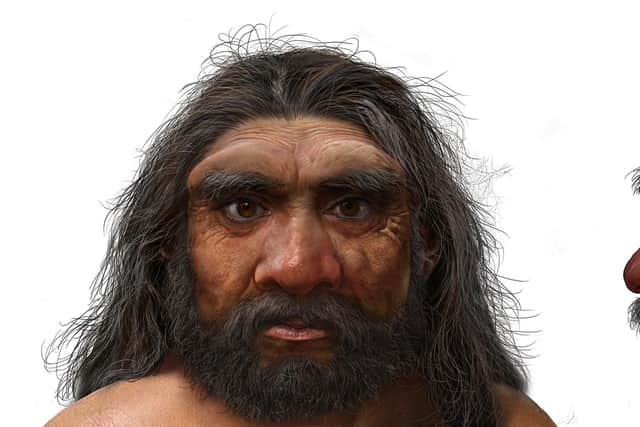New ancient human ‘may replace Neanderthals as closest relative’
and live on Freeview channel 276
A potentially new species of ancient human discovered in China may replace Neanderthals as our closest relative and reshape the understanding of human evolution, according to scientists.
Dubbed Homo longi or “Dragon Man”, the human relative was identified from a skull fossil, known as the Harbin cranium, which was reportedly found in Harbin City in Heilongjiang province in 1933.
More than 146,000 years old


Advertisement
Hide AdAdvertisement
Hide AdThe Harbin cranium is thought to be more than 146,000 years old and came from a male individual, aged around 50.
Researchers said the skull is big enough to hold a brain that is similar in size to that of a modern human – around 1,420ml in brain volume.
But they added that the Dragon Man would have had comparatively larger eye sockets, thick brow ridges, a wide mouth, and oversized teeth.
In their findings, published as three separate papers in the journal The Innovation, the experts said the fossil suggests Homo longi was closer to modern humans (Homo sapiens) than the Neanderthals and points to a new sister lineage.


Advertisement
Hide AdAdvertisement
Hide AdXijun Ni, a professor of primatology and paleoanthropology at the Chinese Academy of Sciences and Hebei GEO University, and author on two of the papers, said: “It is widely believed that the Neanderthal belongs to an extinct lineage that is the closest relative of our own species.
“However, our discovery suggests that the new lineage we identified that includes Homo longi is the actual sister group of Homo sapiens.”
Dragon Man lived as part of a small community
The researchers believe that the Dragon Man lived in a forested, floodplain environment as part of a small community.
They said he, and the ancient Harbin people, would probably have been “very large in size” and capable of adapting to harsh environments.
Advertisement
Hide AdAdvertisement
Hide AdProf Ni said: “Like Homo sapiens, they hunted mammals and birds, and gathered fruits and vegetables, and perhaps even caught fish.”
They hypothesise that the Dragon Man’s community would have encountered modern humans during his time, which was “a dynamic era of human species migration”.
Professor Chris Stringer, research leader at the Natural History Museum in London, and an author on two of the papers, said: “We see multiple evolutionary lineages of Homo species and populations co-existing in Asia, Africa, and Europe during that time.
“So, if Homo sapiens indeed got to East Asia that early, they could have a chance to interact with Homo longi, and, since we don’t know when the Harbin group disappeared, there could have been later encounters as well.”
Advertisement
Hide AdAdvertisement
Hide AdProf Stringer said that, apart from being huge, the Harbin cranium “also shows other features resembling our species”.
He added: “It has flat and low cheekbones with a shallow canine fossa, and the face looks reduced and tucked under the braincase.”
The researchers said their findings have the potential to rewrite major elements of human evolution and push back the common ancestor modern humans share with Neanderthals even further back in time – roughly 400,000 years earlier than previously thought.
Prof Ni said: “The divergence time between Homo sapiens and the Neanderthals may be even deeper in evolutionary history than generally believed – over one million years.”
Advertisement
Hide AdAdvertisement
Hide AdHe added: “Altogether, the Harbin cranium provides more evidence for us to understand Homo diversity and evolutionary relationships among these diverse Homo species and populations.
“We found our long-lost sister lineage.”
But although the Harbin cranium has been described by the team as a new species, Prof Stringer said he was not in full agreement with his colleagues and thinks the skull bears resemblance to another fossil belonging to Homo daliensis – another type of ancient human.
He added: “But regardless of that, the morphology of the fossil is very informative about later human evolution.”
Prof Stringer said the Harbin cranium may even be a representative of the enigmatic Denisovans – an extinct subspecies of ancient humans – but added it was “something for the next stages of research”.
Comment Guidelines
National World encourages reader discussion on our stories. User feedback, insights and back-and-forth exchanges add a rich layer of context to reporting. Please review our Community Guidelines before commenting.